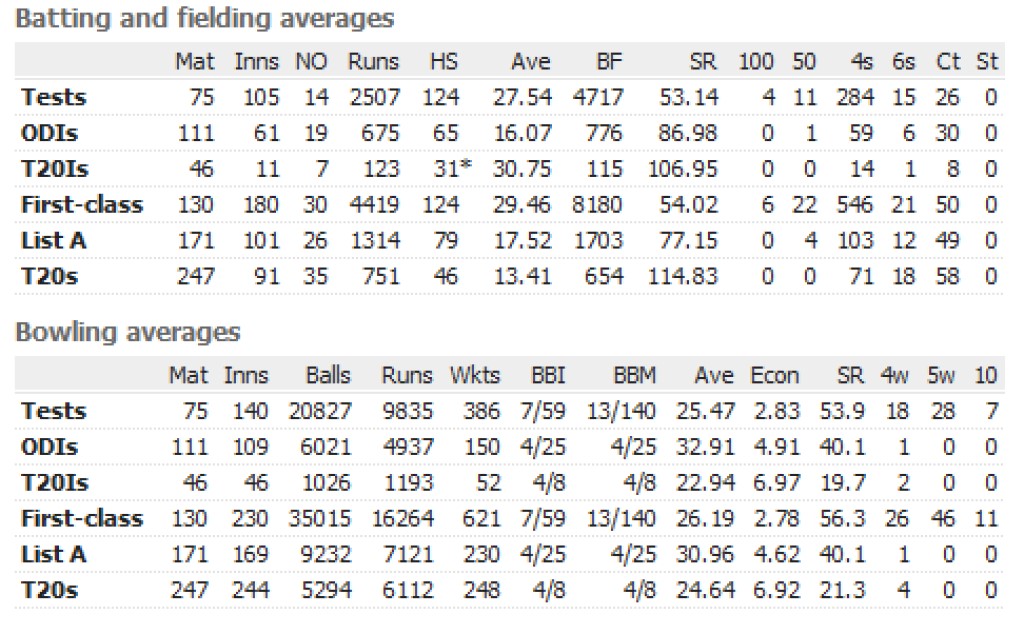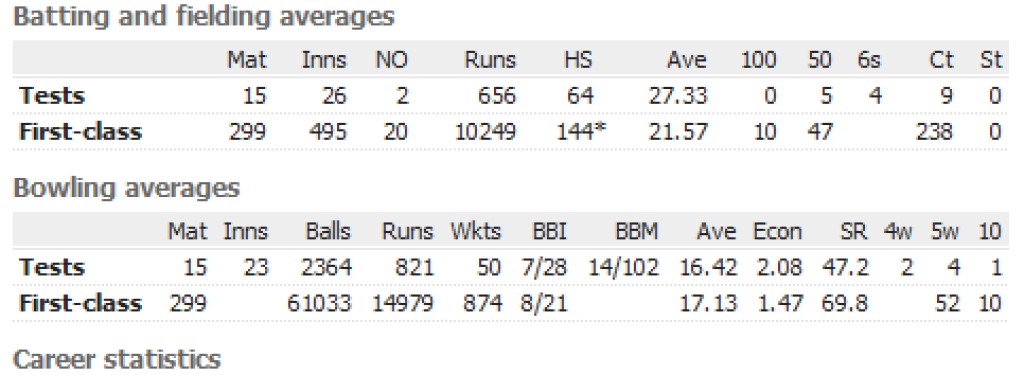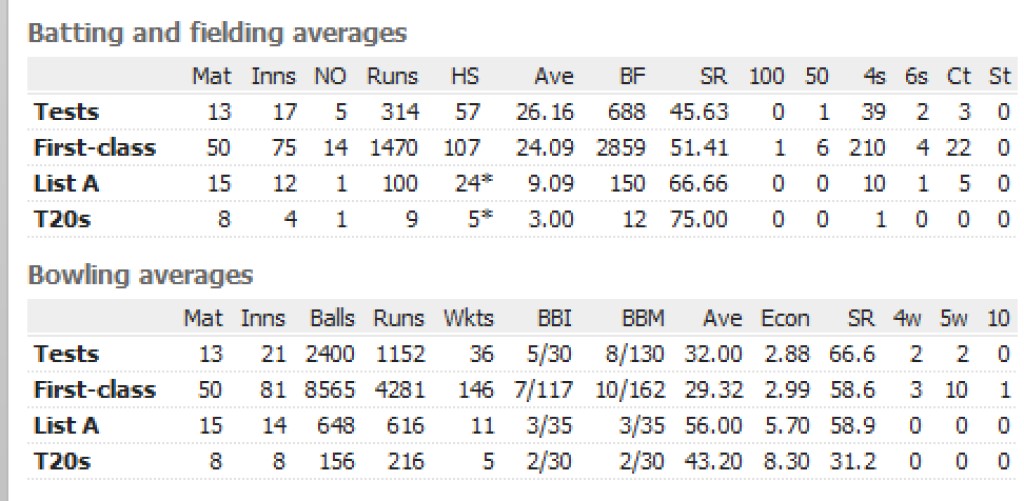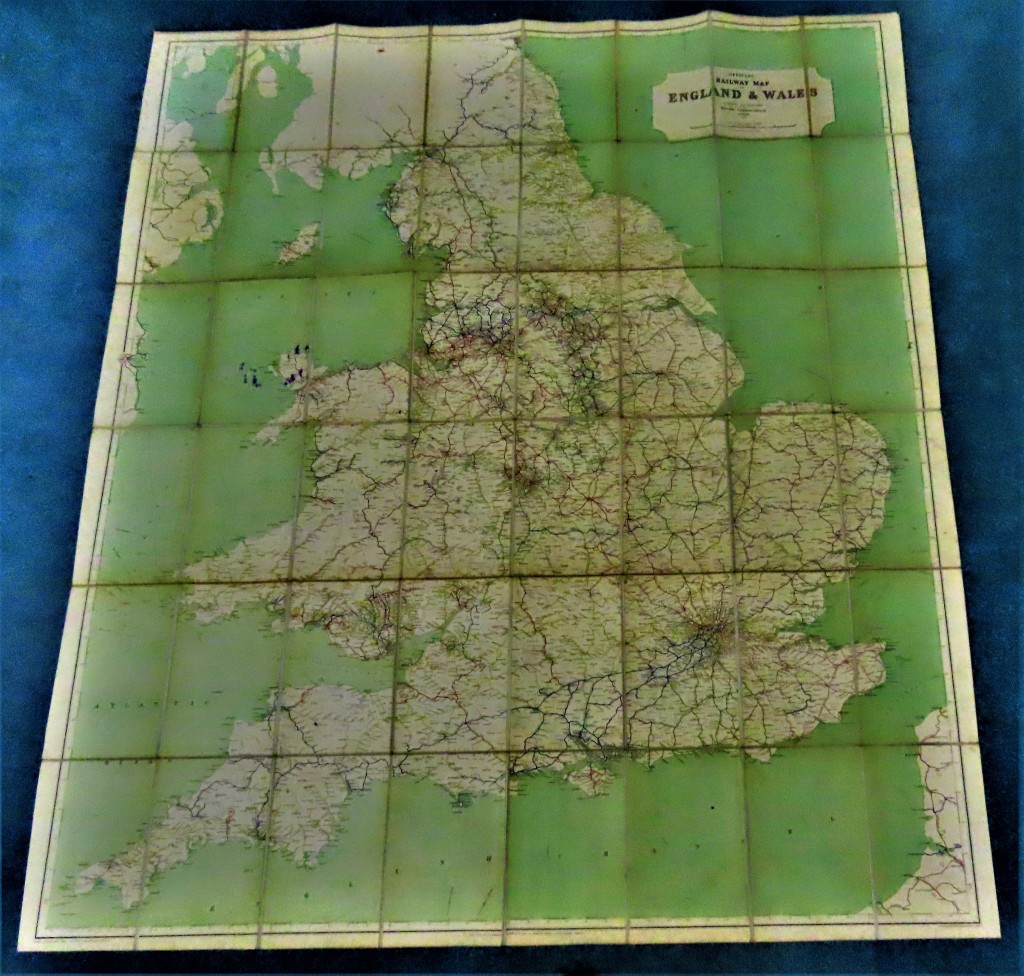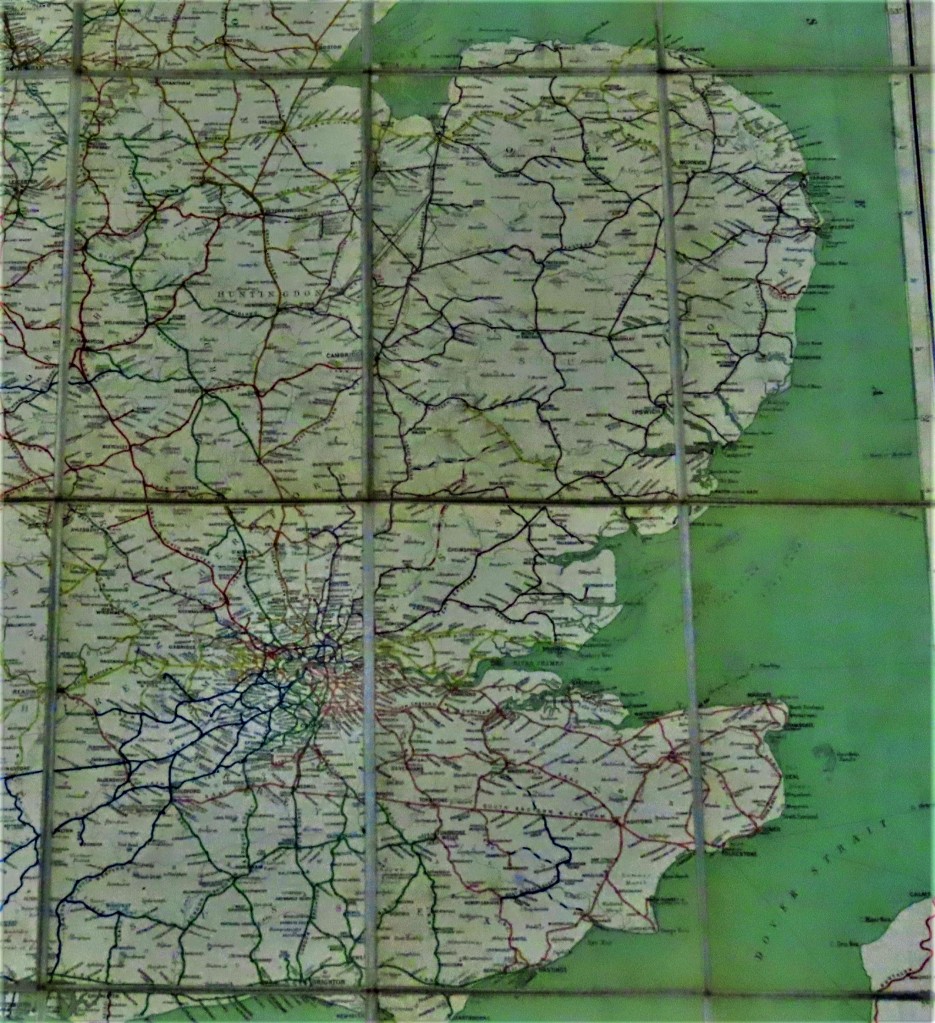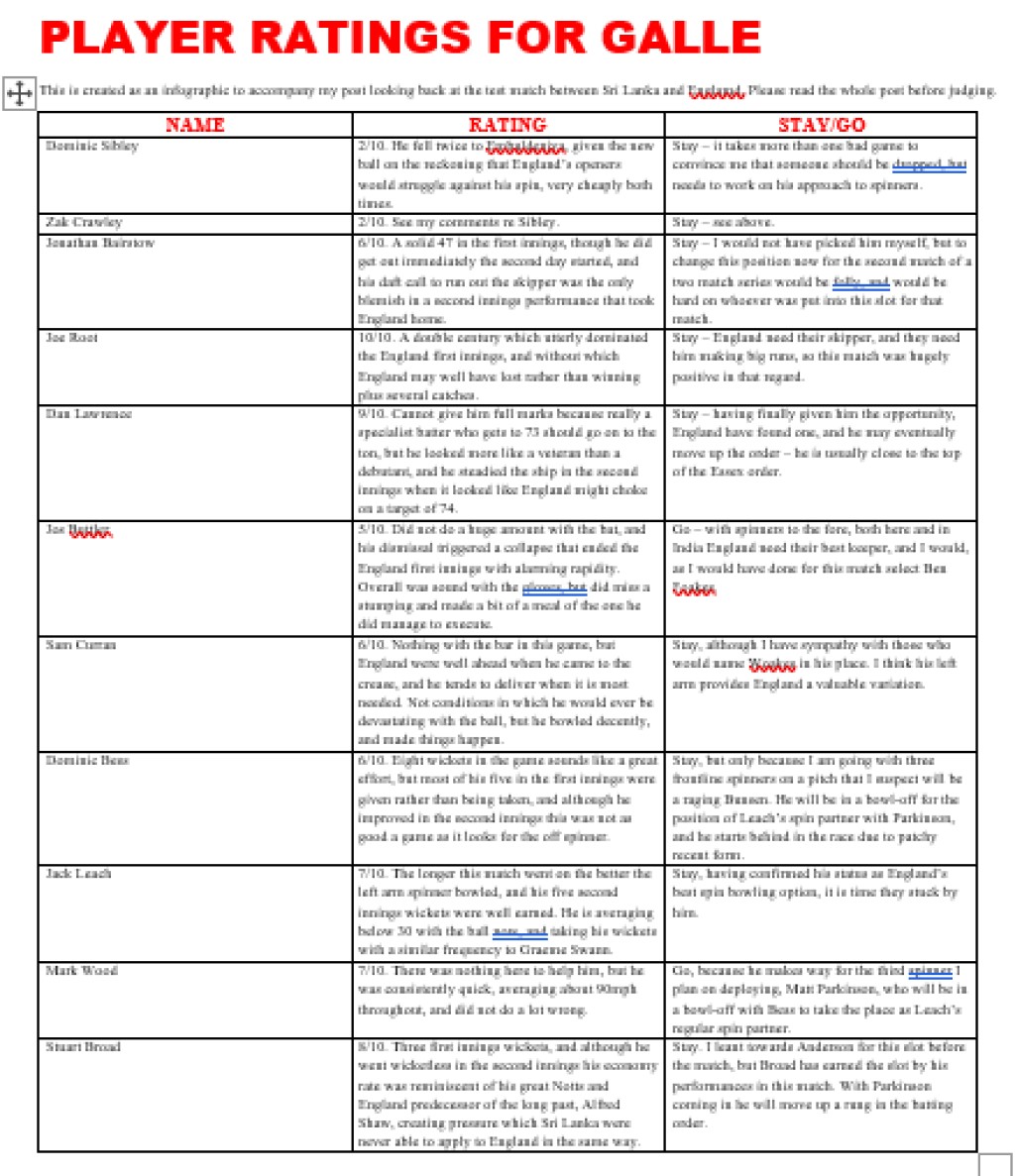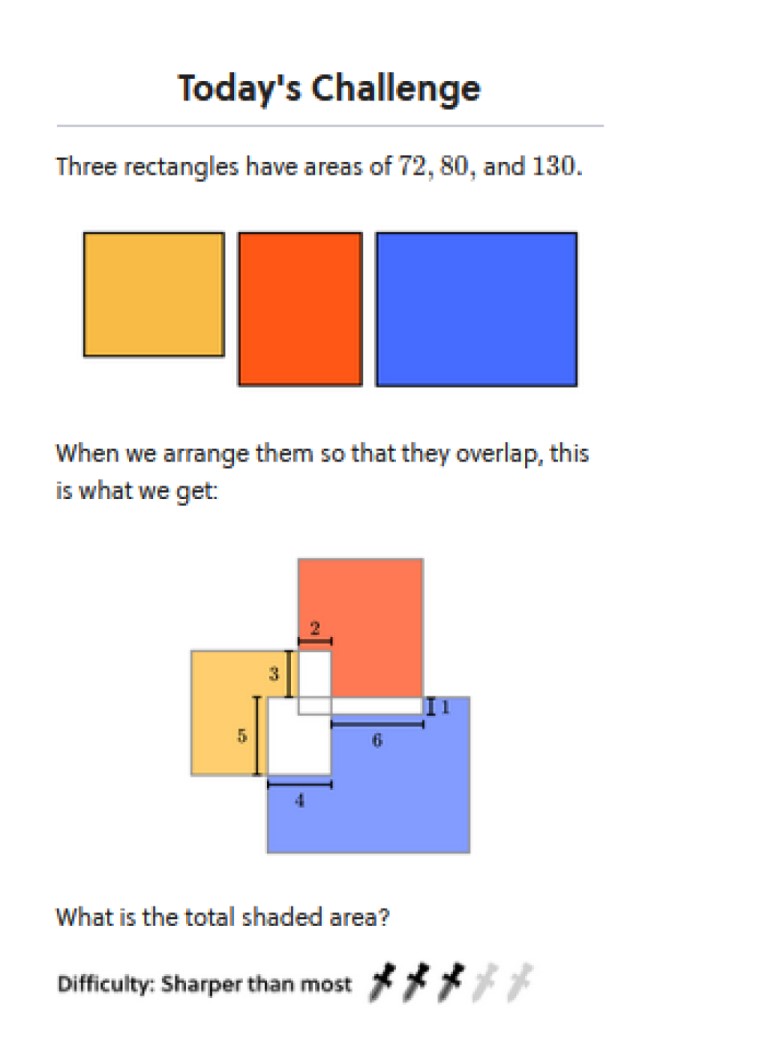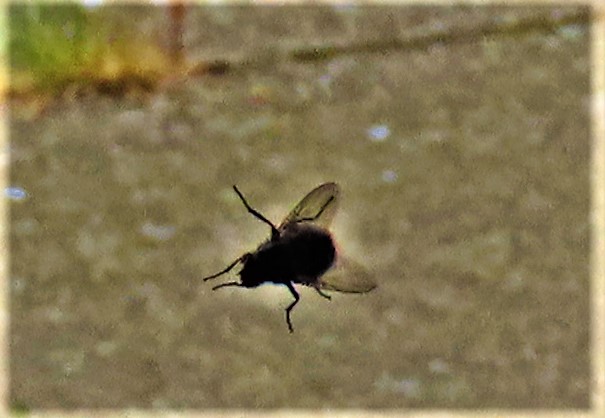This post looks at day three in Chennai, where there was much drama.
THE INDIAN INNINGS
India resumed at 54-1, an advantage of 249. England, helped by some sensational keeping from Ben Foakes took five wickets quite rapidly, reducing India to 106-6, at which point R Ashwin came in to bat in front of his home crowd. He and Virat Kohli put on a superb partnership, before Kohli fell to Moeen Ali, and although neither Kuldeep Yadav nor Ishant Sharma lasted long, Mohammad Siraj stayed there to see Ashwin complete a superb century, the third time in his 76 match test career that he has combined a century with a five wicket innings haul (only Ian Botham who did so against New Zealand, Pakistan, India, Australia and New Zealand has done so more frequently in the history of test cricket). The Indian innings ended at 286, an advantage of 481. The record 4th innings chase in test history is 418, although at Lord’s in 1900, in that year;s big showpiece game the Players after being rolled for 136 in their first innings did chase down 501 in just over a full day to beat the Gentlemen. There were four wickets each for Jack Leach and Moeen Ali, with Stone ending the innings with his fourth wicket of the game. This was the fifth successive test match second innings in which Leach had taken four or more wickets.
ENGLAND’S RESPONSE
While victory was clearly the longest of long shots there was plenty for England to play for. A respectable showing with the bat second time round would salvage some pride, and Rory Burns and Dan Lawrence were both in need of runs to secure their positions, with Zak Crawley likely to return from injury for the next game, Bairstow also available, and Foakes surely established as keeper after his performance here.
Sibley fell cheaply to make it 16-1, but Burns and Lawrence played with aggression but not mindlessly so to take the score to 50, before Burns departed. Leach came in as nightwatchman, and almost immediately departed to his left arm orthodox spinning rival Axar Patel to make it 50-3. England nearly suffered a monster hammer blow just before the close, Joe Root being hit on the pad, given not out by the on field umpire, and the DRS technology showed that the point of impact of ball on pad was “umpire’s call”, while the ball would have made a right mess of the stumps had the pad not impeded it. The replay also showed that the ball actually brushed the stump very faintly on its way through even after impact with pad. England had been on the wrong end of some horrible decisions during the first two days, including one clear breach of DRS protocol by the third umpire, and now it was India’s turn to experience some frustration. Kohli disputed this one with the umpires after the DRS adjudication, at least his third significant infraction of that type in the match, following standing there for a clean bowled on day 1 and talking back after being reprimanded for running on the pitch during his own second innings. I gather that he is danger of a suspension, and he richly deserves it – his behaviour towards umpires here has been ‘Punteresque’, and the original ‘Punter’ committed his worst infraction of that type when there was at least the explanation (not, never, excuse) that his team were on the wrong end of a monstering at the MCG in 2010, whereas here it is Kohli’s side who are handing out the thrashing. England closed on 53-3, needing 429 with two whole days to go, while India need seven wickets.
OFF SPINNERS WHO BAT
The fact that Moeen Ali has taken a few wickets in this match, long after it was already pretty much a guaranteed loss, a position that owed much to his earlier dreadful bowling has led to a resurgence of support for him. I remain adamant that replacing a 23 year old with 33 year old whose record is at best moderate is a retrograde step and may well have damaged Bess’s confidence to boot. I have hunted out some figures for players whose main task is to bowl off spin, but whose batting is considered part of the equation. Below I show four sets of figures, three for contemporary cricketers, two of whom are involved in this match, and one for a fine player from the long past, with supplementary explanation. (see mini gallery that ends this section as well)
- R Ashwin – the best current purveyor of off spin, and as he demonstrated earlier today a very useful lower order batter: test cricket: Averages 27.54 with the bat and 25.47 with the ball excluding the current match, first class cricket, averages 29.46 with the bat and 26.19 with the ball
- Moeen Ali – being regarded at present by far too many as an “all rounder”: test cricket: Averages 28.97 with the bat and 36.59 with the ball excluding this match, first class cricket averages 36.72 with the bat and 37.94 with the ball. His averages in test cricket are the wrong way round by some way, and his first class averages less so, but the relative paucity of his bowling in non-test first class cricket is illustrated by the fact that more than half of his first class scalps have come in test cricket.
- Dominic Bess – dropped and replaced by Moeen Ali: test cricket 26.16 with the bat and 32.00 with the ball, though he has played very few matches at that level, first class cricket 24.09 with the bat and 29.32 with the ball. His 37 ordinary first class matches yield a bowling average of 28.54, 3.46 runs per wicket better than his current test average, and at 23 he is very much an improving player who would be expected to hit his absolute peak years in approximately five years.
- Billy Bates – someone who was this kind of player in the early days of test cricket. His 15 tests yielded 656 runs at 27.33 and 50 wickets at 16.42, while the much longer sample of his first career yielded a batting average of 21.75 and a bowling average of 17.13. Allowing for inflation due to surfaces being kinder to batters these days that first class record equates in modern terms to averaging 32.36 with the bat and 25.70 with the ball, putting him marginally ahead of Ashwin at that level.
PHOTOGRAPHS
Today’s gallery comes in three parts: a special section marking the 50th anniversary of the introduction of decimal currency in Britain, a standard issue gallery, and a standalone infographic created to serve as the feature image.
Now the regular gallery:
Finally, the feature infographic:


